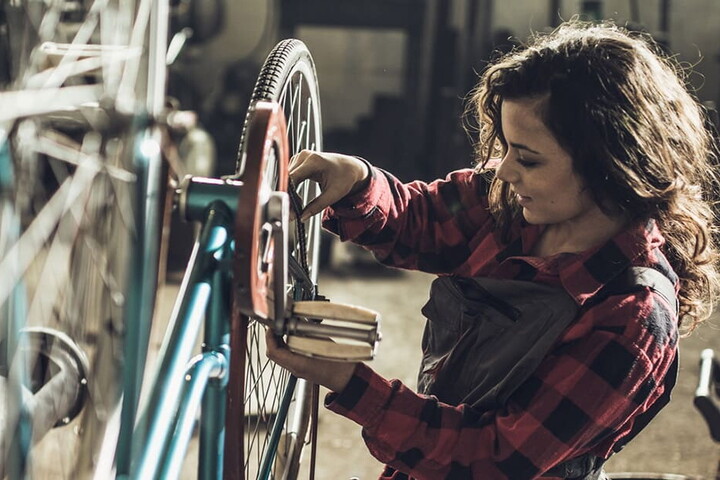With the arrival of the cold season, professional and amateur cyclists are in two minds about whether to continue cycling outdoors or preferring to park their bike in the garage for a while. Pedalling 365 days a year, especially for those who want to compete (in a cyclosportive or in professional competitions), runs the risk of being detrimental because never resting could be counter-productive. On second thoughts, however, remaining inactive for a long time isn't good for you either. We interviewed Josu Larrazabal, Head of Performance of the Trek-Segafredo Team, and asked him for advice on how to continue training without cycling outdoors and get the best start for the new season.

What is the best way to keep fit and not be forced to start from scratch in spring when you resume cycling?
"Up to two to three months before you want to be at the top of your game, you can train with a very varied mix of activities, focusing mostly on two things: strength and endurance. As for endurance, everything that allows you to maintain a long-term pace (even at low intensity) is fine, in other words running, walking in the mountains, skiing, rowing, in short, anything that requires an aerobic effort. As far as strength training is concerned, circuit training at the gym which works out the entire body is just perfect. Spending many months on a bike, your muscle chains tend to close up and physical tensions start to creep in, so you need to compensate, using all your muscles and in a different way, to lengthen them. For amateur cyclists in particular, I wouldn't exaggerate with the loads: just do half the repetitions with a specific weight. Alternatively, I also recommend disciplines such as crossfit, which trains your entire body and is fun, so you are more likely to do it willingly”.
How important is stretching in all of this?
"Physical and mental well-being activities such as pilates, yoga, stretching, or whatever develops control of the body and mind are very important. They don't add Watts on your bike, but they allow you to improve your health in general, so you can train with fewer physical problems”.
Let's now discuss training which is more similar to actual cycling, i.e. rollers. Are they a useful tool?
"They are very useful. Once upon a time, they were almost only used by track cyclists, whom I consider genuine “animals”; today, also due to the various nationwide lockdowns, they have become fashionable among amateur cyclists, thanks above all to the social media platforms with which you can interact with colleagues and friends and even race. Using them in this way makes them lots of fun and an excellent strategy for cycling without going outdoors in winter”.
What mistakes do you need to avoid making when training on rollers?
"It is very easy to exaggerate with intensity, because it is a hard workout, almost as if you are always riding uphill. Many people let virtual races get out of hand, as the race could go well, but it depends on how much energy you want to consume in winter and how fit you want to be for the new season on your bike”.
So what do you recommend to those who train on rollers?
"I would say not to exceed one race a week, to which I would add some short training sessions: you train a lot in an hour. It is essential to drink more than usual, because you get very dehydrated; so if possible, it would be best to create some ventilation by opening a window”.
Is training on a stationary bike OK?
“Yes. Let's say that a few years ago, it was hard to find a stationary bike that looked like a real bike; they were too “comfortable”, and were suitable for everyone, for children and even the elderly. These days, I don't know whether it is a result of the boom in indoor training, but there are some incredible stationary bikes which replicate your position on a bike perfectly. Just the other day, I tried one that allows you to simulate ascent and descent, but also different surfaces, such as cobbles”.
Overall, how long should you stop for after a cycling season?
"It depends on many factors. Age does not help in this, because if you are young you will accept breaks much more easily, whereas people of a certain age will find it tough to get back on the saddle after a while. The concept of how long a break to take is mostly psychological. The professionals with whom I work need to stop a while after a high-intensity season. An amateur might not reach that level of mental exhaustion, because they may not be able to cycle as much as they would like during the season due to work and family commitments, or simply because, unlike a professional cyclist, they can change activities and find other ways to let off steam. It is a very subjective thing; for instance, I finish the season in September-October, so in autumn I start to train more, while some of my friends take a break at that time”.




